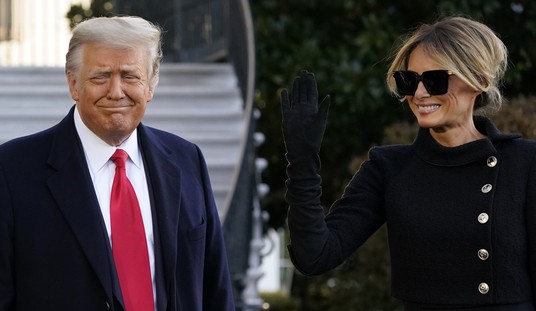=========
=========
Promoted from the diaries by streiff. Promotion does not imply endorsement.
=========
=========

** FILE ** Brett Kavanaugh appears before the Senate Judiciary Committee on Capitol Hill April 26, 2004, on his nomination to be U. S. circuit judge for the District of Columbia Circuit. Kavanaugh’s nomination by President Bush to a federal appeals court judgeship is moving toward a vote in the Senate after being blocked for more than two years by Democrats. (AP Photo/Dennis Cook, File)
Desperate to stop, obstruct, delay and otherwise throw a monkey wrench into the impending confirmation of Brett Kavanaugh to the United States Supreme Court, the Democratic Party, aided by a bevy of Leftist groups, are thrashing about looking for any means to achieve their ends. Besides the over-the-top rhetoric and hyperbole coming from the pie holes of many where, to hear them talk, Kavanaugh will be responsible for actual deaths and a dystopian America, there is one idea floating around out there that needs discussion.
That is the use of the Senate’s quorum rules. When a President makes a nomination, that name is submitted to the Senate Judiciary Committee. The Committee consists of 21 Senators- 11 Republicans and 10 Democrats. Senator Grassley of Iowa is the Chairman and Diane Feinstein of California is the ranking member of the minority party.
Before any action is taken, it is customary for the nominee to meet with Senators privately to answer any questions or concerns they may have. This is not mandatory, but more of a courtesy and tradition. Thus far, no Democrats have met with Kavanaugh as he has apparently contracted leprosy. Whatever…their loss.
The next step is the Judiciary Committee itself. Once referred to the Committee, it usually takes about 30-45 days to gather and parse relevant data on the nominee. They must also undergo an FBI background check and file a financial disclosure. Here, there are rumors that the Democrats are attempting to require that Kavanaugh turn over a ridiculous number of documents and pages and that they be given time to look them over. This is a silly delaying tactic since under Committee rules only seven of 21 members need be present to discuss Committee business. It is during this discussion period that a date and time for a hearing will be set and the rules established. Since Democrats have been reluctant to deal with Kavanaugh to this date, should they not attend it makes no difference. Hence, if they want the rules worked out to their advantage, it would pay for at least Feinstein to be present to work out a compromise.
Things can get a tricky from here. For the Committee to transact any business, the Committee rules stipulate that nine Senators be present and at least two of them be of the minority party. This is where it has been suggested by some that the Democrats can delay any action on Kavanaugh by denying a Committee quorum as defined by their own rules.
The question arises as to whether the Chairman can compel the attendance of a Committee member. Here, Article I, Section 5 may be instructive. That section defines a quorum of a simple majority, but it applies to the entire Congressional chamber. In the case of the full Senate, that would be 51 Senators. In the case of the Judiciary Committee, it would be 11 members, but for but for Committee Rule III (1) it requires two minority members being present.
However, the Democrats would have to be true nimrods to use this tactic. Judicial nominations are considered by the Senate Judiciary Committee. There is no rule stipulating that a confirmation hearing must take place. It merely states that it “be considered.” That can be done absent a hearing.
As for the whole Senate, our Founders anticipated that recalcitrant Senators could simply not show up and deny a quorum. That is why they allowed either house of Congress to develop and implement their own rules. Under the rules of the Senate, the Majority Leader (McConnell) can request and then compel the attendance of absent Senators to establish a quorum. Should they refuse, they can be physically taken to the Senate chambers. One Senator was brought in by hands and feet once (Bob Packwood). In 1942, several Southern Democrats tried this method to avoid a vote on civil rights legislation.
But the question remains as to whether Grassley could compel the attendance of absent Democratic Senators since there is nothing in the Committee rules addressing this issue? Here, Senate Rule XXVI likely addresses the issue. Rule XXVI stipulates:
- to transact business, only one-third of the members are required to establish a quorum [Committee Rule III (1) does that];
- to close a “hearing” a majority of the committee is required (or the 11 Republicans assuming they stick together), and;
- to report anything to the full Senate, a majority of the Committee “physically present” must agree (again, the 11 Republicans assuming they stick together).
Should the Democrats attempt to deny a Committee quorum, Grassley can simply waive any hearings which would deny any Democrat the opportunity to question Kavanaugh. Further, while Committee Rule III (1) requires two members of the minority party to establish a quorum to conduct business (i.e., hold a hearing), Senate Rule XXVI specifically states that a committee cannot waive the “majority of those present” rule to advance the nomination to the full Senate.
If the Democrats want to go this route, then Kavanaugh advances 11-0 out of the Judiciary Committee. Their next move could be to deny a quorum in the full Senate under Article I, Section 5 which requires a majority of Senators be present. With John McCain absent, the GOP holds a 50-49 advantage. To establish the lack of a quorum, a Senator must suggest the absence of a quorum and the clerk reads the roll. If all 50 Republicans are present plus the one Democrat making the quorum call, there are obviously 51 present to establish a quorum.
The problem then is cloture, or ending debate, which requires 51 votes. Here, the Democrats can simply send a single Senator to the floor each day, suggest the lack of a quorum, have the roll taken establishing a quorum, then have that lone Democrat refuse to vote for cloture.
From an optical standpoint, the Democrats would be playing with political fire should they adopt this obvious obstructionist game of parliamentary suicide. One cannot see Democratic Senators from red states won by Trump in 2016 and where Trump remains popular playing this game. Their obvious objective is to delay the confirmation until after the midterm elections believing they have a chance to win back the Senate and block any Trump nominee not to their liking. The tactic may also cause fence-sitting Republicans like Collins and Murkowski to jump off the fence. And from a realistic standpoint, one cannot see a Joe Manchin, Claire McCaskill or Heidi Heitkamp explaining such a move to the voters of West Virginia, Missouri or North Dakota, respectively.
And they would be well-reminded that the Republicans, who hold the majority, can move to waive any rule to expedite floor action. Also, McConnell can keep the Senate in session until a vote occurs and this takes precious time away from Senators up for reelection to campaign in their home states.
The Democrats may play hard ball here, but McConnell’s balls are harder… if he grows a set.













Join the conversation as a VIP Member